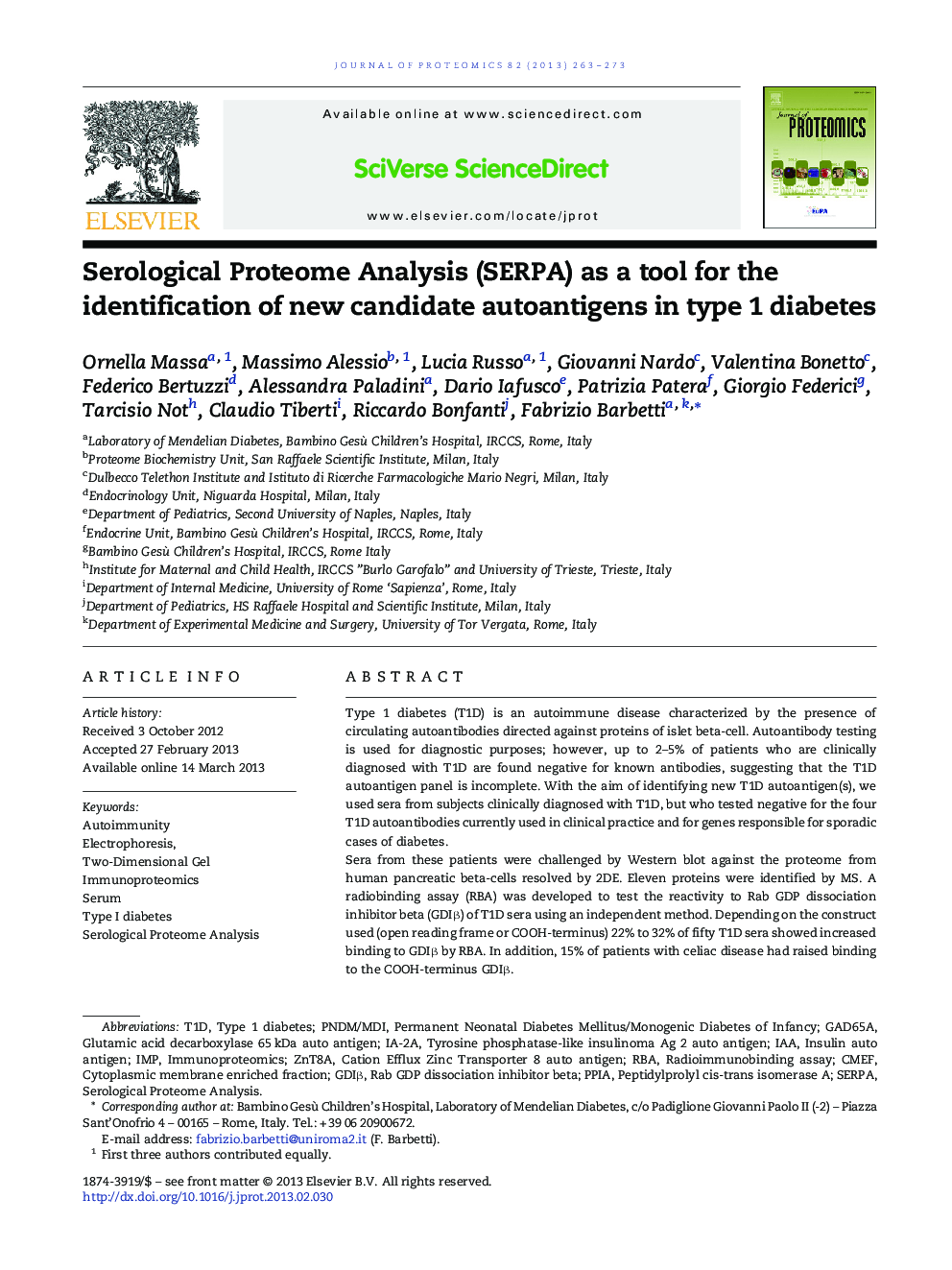| Article ID | Journal | Published Year | Pages | File Type |
|---|---|---|---|---|
| 1226189 | Journal of Proteomics | 2013 | 11 Pages |
•Immunoproteomics is a useful tool to identify novel autoantigens in type 1 diabetes.•T1D sera negative to four auto-Ab identified 11 proteins as putative autoantigens.•Rab GDP dissociation beta (GDIβ) is one of the candidate autoantigens.•Radio binding assay and immunodepletion experiment support GDIβ candidature.
Type 1 diabetes (T1D) is an autoimmune disease characterized by the presence of circulating autoantibodies directed against proteins of islet beta-cell. Autoantibody testing is used for diagnostic purposes; however, up to 2–5% of patients who are clinically diagnosed with T1D are found negative for known antibodies, suggesting that the T1D autoantigen panel is incomplete. With the aim of identifying new T1D autoantigen(s), we used sera from subjects clinically diagnosed with T1D, but who tested negative for the four T1D autoantibodies currently used in clinical practice and for genes responsible for sporadic cases of diabetes.Sera from these patients were challenged by Western blot against the proteome from human pancreatic beta-cells resolved by 2DE. Eleven proteins were identified by MS. A radiobinding assay (RBA) was developed to test the reactivity to Rab GDP dissociation inhibitor beta (GDIβ) of T1D sera using an independent method. Depending on the construct used (open reading frame or COOH-terminus) 22% to 32% of fifty T1D sera showed increased binding to GDIβ by RBA. In addition, 15% of patients with celiac disease had raised binding to the COOH-terminus GDIβ.These results indicate that immunoproteomics is a feasible strategy for the identification of candidate T1D autoantigens.Biological significanceSeveral approaches have been previously used to look for new type 1 diabetes autoantigens.With the present work we show that carefully selected sera from rare patients with diabetes both negative for the 5 autoantibodies currently used in clinical practice and for genes responsible for sporadic cases of diabetes, may be exploited in experiments utilizing human pancreatic islets extracts as a target for SERPA to identify novel candidate T1D autoantigens.
Graphical abstractFigure optionsDownload full-size imageDownload high-quality image (73 K)Download as PowerPoint slide
